- 翰林提供学术活动、国际课程、科研项目一站式留学背景提升服务!
- 400 888 0080
IB DP Physics: SL复习笔记1.2.2 Calculating Uncertainties
Uncertainties
Precision
- Precise measurements are ones in which there is very little spread about the mean value, in other words, how close the measured values are to each other
- If a measurement is repeated several times, it can be described as precise when the values are very similar to, or the same as, each other
- Another way to describe this concept is if the random uncertainty of a measurement is small, then that measurement can be said to be precise
- The precision of a measurement is reflected in the values recorded – measurements to a greater number of decimal places are said to be more precise than those to a whole number
Accuracy
- A measurement is considered accurate if it is close to the true value
- Another way to describe this concept is if the systematic error of a measurement is small, then that measurement can be said to be accurate
- The accuracy can be increased by repeating measurements and finding a mean of the results
- Repeating measurements also helps to identify anomalies that can be omitted from the final results
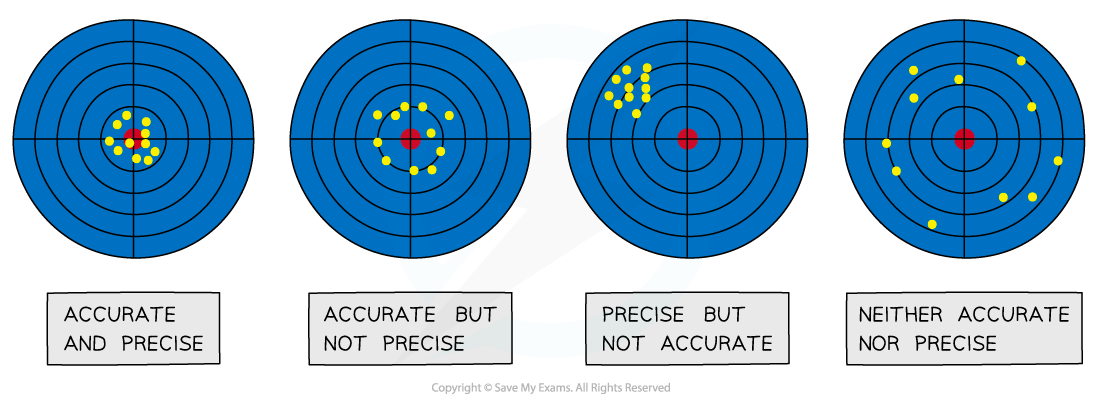
The difference between precise and accurate results
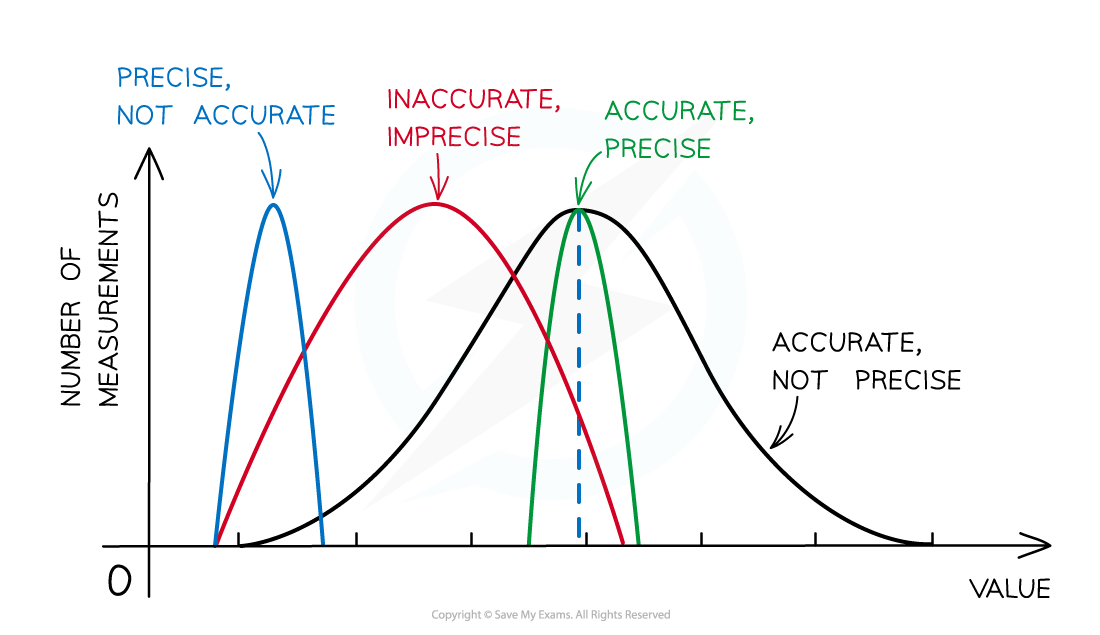
Representing precision and accuracy on a graph
Types of Uncertainty
- There is always a degree of uncertainty when measurements are taken; the uncertainty can be thought of as the difference between the actual reading taken (caused by the equipment or techniques used) and the true value
- Uncertainties are not the same as errors
- Errors can be thought of as issues with equipment or methodology that cause a reading to be different from the true value
- The uncertainty is a range of values around a measurement within which the true value is expected to lie, and is an estimate
- For example, if the true value of the mass of a box is 950 g, but a systematic error with a balance gives an actual reading of 952 g, the uncertainty is ±2 g
- These uncertainties can be represented in a number of ways:
- Absolute Uncertainty: where uncertainty is given as a fixed quantity
- Fractional Uncertainty: where uncertainty is given as a fraction of the measurement
- Percentage Uncertainty: where uncertainty is given as a percentage of the measurement

- To find uncertainties in different situations:
- The uncertainty in a reading: ± half the smallest division
- The uncertainty in repeated data: half the range i.e. ± ½ (largest - smallest value)
- The uncertainty in digital readings: ± the last significant digit unless otherwise quoted
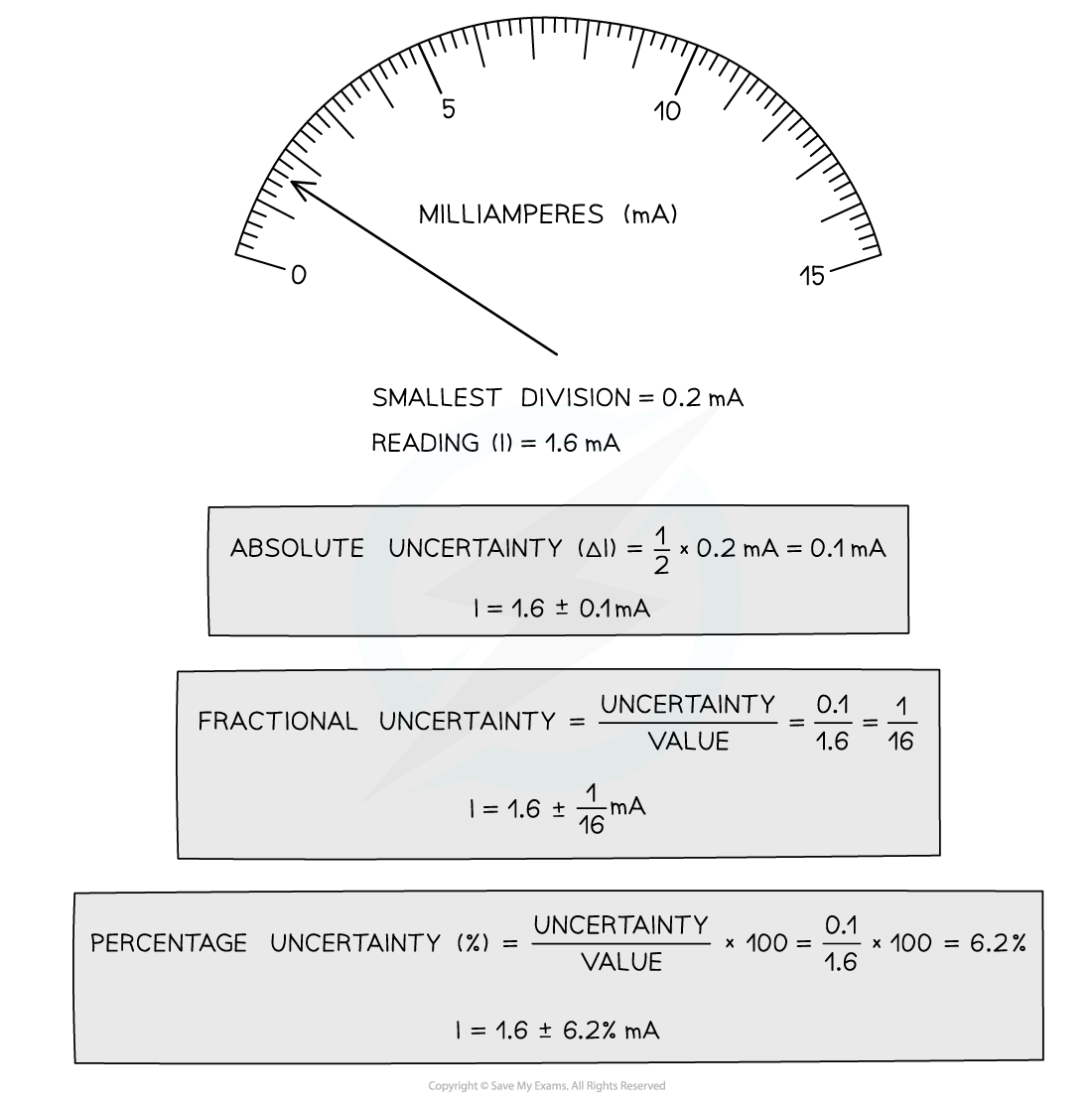
How to calculate absolute, fractional and percentage uncertainty
- Always make sure your absolute or percentage uncertainty is to the same number of significant figures as the reading
Propagating Uncertainties
Combining Uncertainties
- When combining uncertainties, the rules are as follows:
Adding / Subtracting Data
- Add together the absolute uncertainties
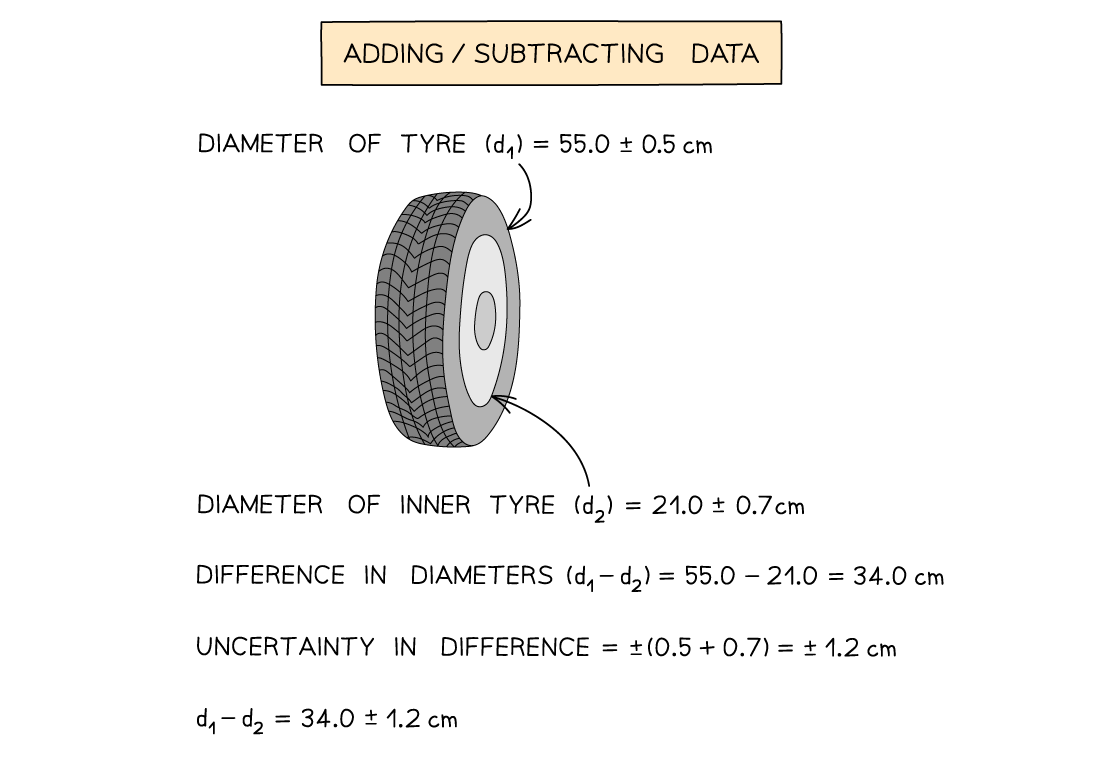
Multiplying / Dividing Data
- Add the percentage or fractional uncertainties

Raising to a Power
- Multiply the percentage uncertainty by the power
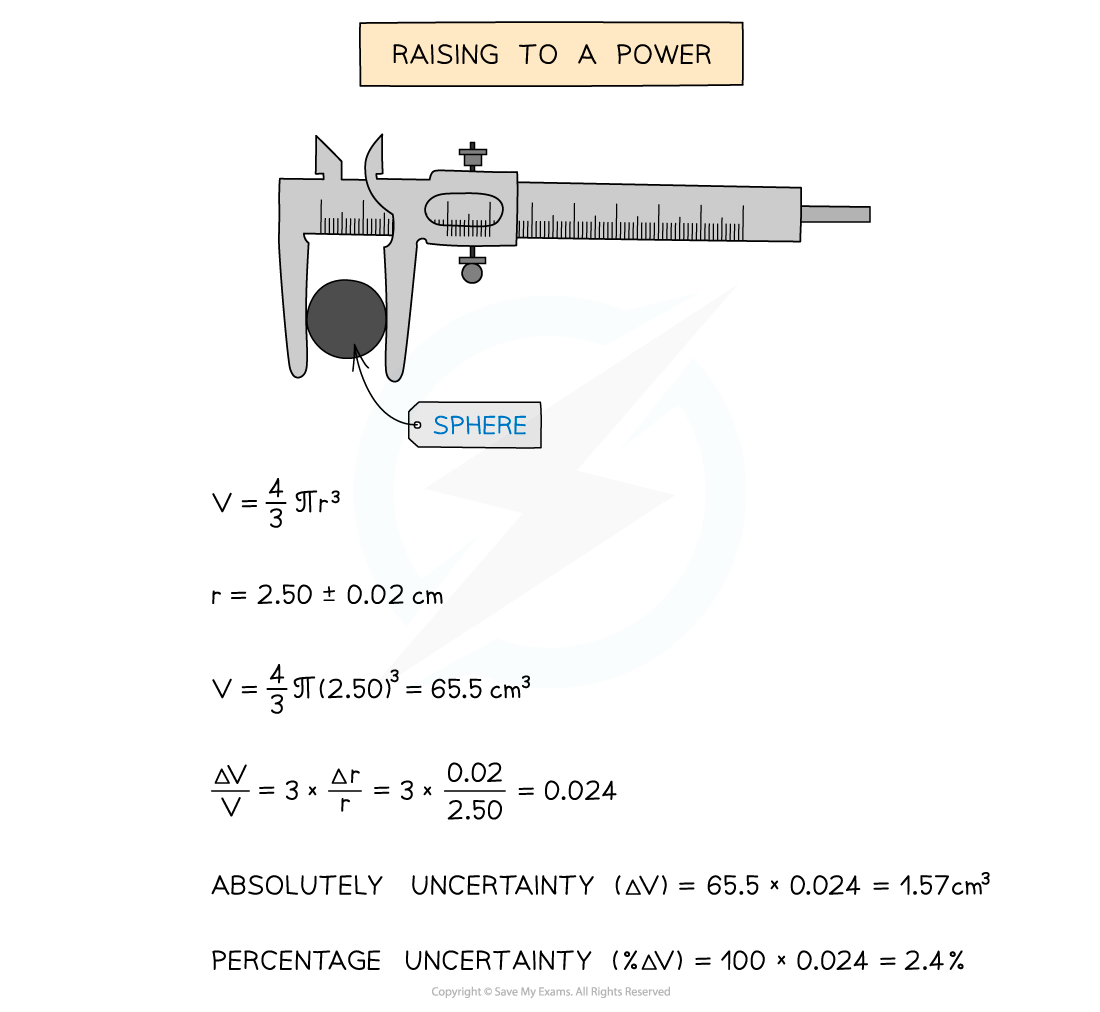
Worked Example
Consider two lengths:
A = 5.0 ± 0.1 cm and B = 2.5 ± 0.1 cm
Which of the following has the smallest percentage uncertainty
A. A + B
B. A – B
C. A × B
D. A
Step 1: List the known quantities
-
- A = 5.0 cm
- Uncertainty in A, ΔA = 0.1 cm
- B = 2.5 cm
- Uncertainty in B, ΔB = 0.1 cm
Step 2: Check the percentage uncertainty of option A
A + B = 5.0 + 2.5 = 7.5 cm
-
- The rule for propagating uncertainties for adding data (A + B) is ΔA + ΔB
- The combined uncertainties are:
0.1 + 0.1 = ± 0.2 cm
-
- Therefore, the percentage uncertainty is:
(0.2 ÷ 7.5) × 100 ≈ 2.7%
Step 3: Check the percentage uncertainty of option B
A − B = 5.0 − 2.5 = 2.5 cm
-
- The rule for propagating uncertainties for subtracting data (A – B) is ΔA + ΔB
- The combined uncertainties are:
0.1 + 0.1 = ± 0.2 cm
-
- Therefore the percentage uncertainty is:
(0.2 ÷ 2.5) × 100 = 8%
Step 4: Check the percentage uncertainty of option C
A × B = 5.0 × 2.5 = 12.5 cm
-
- The rule for propagating uncertainties for multiplying data (A × B) is ΔA/A + ΔB/B
- The combined uncertainties are:
(0.1 ÷ 5.0) + (0.1 ÷ 2.5) = 0.02 + 0.04 = 0.06
-
- Therefore the percentage uncertainty is:
0.06 × 100 = 6%
Step 5: Check the percentage uncertainty of option D
-
- A = 5.0 cm and the uncertainty is 0.1 cm
- Therefore the percentage uncertainty is:
(0.1 ÷ 5.0) × 100 = 2%
Step 6: Compare and select the answer with the smallest percentage uncertainty
-
- Comparing the four options, option D is the correct answer as it has a value of 2% which is the smallest percentage uncertainty
Worked Example
For the value B = 3.0 ± 0.1, if B is square rooted (√B) what is the answer along with the absolute uncertainty?
Step 1: Find what the value of the quantity will be
√B = √3.0 ≈ 1.73
Step 2: Find the percentage uncertainty of the original
(0.1 ÷ 3.0) × 100 ≈ 3.33%
Step 3: The percentage uncertainty needs to be multiplied by the power of the operation
3.33 × (1 ÷ 2) ≈ 1.67%
Step 4: Apply the percentage uncertainty to the absolute answer
1.67% in decimal form is 0.0167. Therefore: 0.0167 × 1.73 ≈ 0.03
Step 5: State the complete answer
√B = 1.73 ± 0.03
Exam Tip
Remember:
- Absolute uncertainties (denoted by Δ) have the same units as the quantity
- Percentage uncertainties have no units
- The uncertainty in constants, such as π, is taken to be zero
转载自savemyexams

最新发布
© 2026. All Rights Reserved. 沪ICP备2023009024号-1









